- Home
- Orhan Pamuk
Istanbul Page 21
Istanbul Read online
Page 21
To see the city from many different points of view and thereby maintain the vitality of my connection to it, I sometimes fool myself. There are times—after I’ve gone for a long stretch without going outside or even bothering to look for that other Orhan waiting so patiently in that other house—when I worry that my attachment to this place will ossify my brain, that isolation might kill the desire in my gaze. Then I take comfort in reminding myself that there is something foreign in my way of looking at the city, owing to all the time I’ve spent reading the accounts of western travelers. Sometimes, when I read about the things that never change—some of the main streets and side alleys, the wooden houses somehow still standing, the street vendors, the empty lots, and the hüzün, all that is as it was despite a tenfold increase in population—I will lull myself into believing that the accounts of western outsiders are my own memories.
If western travelers embroider Istanbul with illusions, fantasies about the East, there is in the end no harm done to Istanbul; we were never a western colony. So if Gautier mentions that the Turks don’t cry when a disastrous fire strikes—that, unlike the French, who cry a great deal, they face adversity with dignity because they believe in fate—I might disagree entirely with what he says, but I still don’t feel badly wronged. The disservice is done elsewhere: Any French reader who took Gautier at face value would be mystified as to why it is that İstanbullus have been unable to throw off their hüzün.
What grievance I feel when I read western travelers on Istanbul is above all that of hindsight: Many of the local features these observers, some of them brilliant writers, noted and exaggerated were to vanish from the city soon after having been remarked. It was a brutal symbiosis: Western observers love to identify the things that make Istanbul exotic, nonwestern, whereas the westernizers among us register all the same things as obstacles to be erased from the face of the city as fast as possible.
Here’s a short list:
The Janissaries, those elite troops of great interest to western travelers until the nineteenth century, were the first to be dissolved. The slave market, another focus of western curiosity, vanished soon after they began writing about it. The Rufai dervishes with their waving skewers and the Mevlevi dervish lodges closed with the founding of the Republic. The Ottoman clothing that so many western artists painted was abolished soon after André Gide complained about it. The harem, another favorite, also gone. Seventy-five years after Flaubert told his beloved friend that he was going to the market to have his name written in calligraphy, all of Turkey moved from the Arabic to the Latin alphabet, and this exotic joy ended too. Of all these losses, I think the hardest for İstanbullus has been the removal of graves and cemeteries from the gardens and squares of our everyday lives to terrifying high-walled lots, bereft of cypress or view. The hamals and their burdens, noted by so many travelers of the republican period—like the old American cars that Brodsky noted—were no sooner described by foreigners than they vanished.
Only one of the city’s idiosyncracies has refused to melt away under the western gaze: the packs of dogs that still roam the streets. After he abolished the Janissaries for not complying with western military discipline, Mahmut II turned his attention to the city’s dogs. In this ambition, however, he failed. After the Constitutional Monarchy, there was another “reform” drive, this one aided by the Gypsies, but the dogs they removed one by one to Sivriada managed to find their way triumphantly back home. The French, who thought the dog packs exotic, found the cramming of all the dogs into Sivriada even more so; Sartre would joke about this years later in his novel The Age of Reason.
Max Fruchtermann, the postcard artist, seems to have recognized the exoticism of the dogs’ survival: In a series of Istanbul views he produced around the turn of the twentieth century, he was careful to include as many street dogs as he did dervishes, cemeteries, and mosques.
CHAPTER TWENTY-SIX
The Melancholy of the Ruins: Tanpınar and Yahya Kemal in the City’s Poor Neighborhoods
Tanpınar and Yahya Kemal took long walks together through Istanbul’s poorest sections. Revisiting them on his own during the Second World War, Tanpınar recalled how much he had learned strolling earlier through “those vast impoverished neighborhoods between Kocamustafapaşa and the city walls.” These were the neighborhoods in which Gautier sensed the gloom that had fallen over the city by 1853; Tanpınar and Yahya Kemal began their excursions during the humiliating “armistice years.”
When these two great Turkish writers set out on their first walk, seventy years had passed since the visits of Nerval and Gautier, the two French friends whose works they so admired; during that time the Ottoman Empire had slowly lost its territories in the Balkans and the Middle East, growing smaller and smaller until it finally disappeared; the sources of income that had nurtured Istanbul dried up; despite the steady steam of Muslim refugees fleeing from the ethnic cleansing in the new Balkan republics, the death toll of the First World War ran into the hundreds of thousands, so both the city’s population and its wealth were much diminished. During the same period, Europe and the West were getting richer, thanks to huge technological advances. As Istanbul grew ever poorer, it lost its importance in the world and became a remote place burdened with high unemployment. As a child I had no sense of living in a great world capital but rather in a poor provincial city.
When Tanpınar wrote “A Stroll Through the City’s Poor Neighborhoods,” he was not just describing his own most recent visit and his earlier walks. His purpose was more than merely to reacquaint himself with the poorest and most remote areas of Istanbul; he was attempting to accustom himself to the fact of living in an impoverished country, in a city that no longer mattered in the eyes of the world. To explore the poor neighborhoods as a landscape, then, was to address the reality that Istanbul and Turkey were themselves poor neighborhoods.
Tanpınar writes at length about the burned-out streets, the ruins, and the crumbling walls familiar to me as a child. Later during his stroll he hears women’s voices (out of habit Tanpınar refers to this as the “chirping of the harem”) coming from “a big wooden mansion from the Abdülhamit period that is only just managing to stay in one piece,” but in keeping with the political-cultural program he has set himself, he is obliged to explain that these are not Ottoman sounds but rather those of poor women working in the city’s new cottage industries—“a stocking factory or a textile weaving shop.” On every page, Tanpınar repeats the phrase “as we’ve all known since childhood”; he describes a neighborhood Rasim once mentioned in a column as “a fountain shaded by a trellis of vines or grapes, clothes hanging in the sun to dry, cats with dogs, little mosques and cemeteries.” The melancholy Tanpınar first discovered in Nerval’s and Gautier’s arresting observations about the poor neighborhoods, the ruins, dingy residential districts, and city walls, he transforms into an indigenous hüzün through which to apprehend a local landscape and, most particularly, the everyday life of a modern working woman.
We cannot know if he was fully aware of doing this. But he was aware that the burned-out lots, workshops, depots, and ramshackle wooden mansions he found in the crumbling and forgotten empty streets of these “isolated” sections carried a special beauty and significance. Because in the same piece, Tanpınar writes:
I see the adventures of these ruined neighborhoods as symbolic. Only time and the sharp shocks of history can give a neighborhood such a face. How many conquests, how many defeats, how many miseries did its people have to suffer to create the scene before us?
We can give an answer that is probably already nestling in the reader’s mind: If people were preoccupied by the destruction of the Ottoman Empire and the decline of Istanbul in the eyes of Europe, on the one hand, and on the other by the melancholy-hüzün that all great losses awaken, why did they not transform their Nervalian suffering into the sort of “pure poetry” to which it was so well suited? In Nerval’s Aurelia, when he loses his love and his melancholy darkens, we can understa
nd his claim that there is nothing left to life but “vulgar distractions.” Nerval came to Istanbul to leave his melancholy behind. (Without knowing it, Gautier allowed this melancholy to seep into his own observations.) When Tanpınar, Turkey’s greatest twentieth-century novelist, and Yahya Kemal, its greatest twentieth-century poet, strolled together through the city’s poor neighborhoods, they did so to feel their losses and their melancholy all the more keenly. Why?
They had a political agenda. They were picking their way through the ruins looking for signs of a new Turkish state, a new Turkish nationalism: The Ottoman Empire might have fallen, but the Turkish people had made it great (like the state, the two were happy to forget the Greeks, the Armenians, the Jews, the Kurds, and many other minorities), and they wanted to show that though suffused in melancholy they were still standing tall. Unlike the ideologues of the Turkish state who expressed their nationalism in unlovely and unadorned authoritarian rhetoric, they expressed their patriotism in a poetic language far removed from decrees and force. Yahya Kemal had spent ten years in Paris studying French poetry; “thinking like a Westerner,” he longed for a western-style image that would make nationalism “look more beautiful.”
When the Ottoman Empire emerged defeated from the First World War, the Allies occupied Istanbul, and French and English battleships were sitting on the Bosphorus in front of Dolmabahçe Palace, there were various political projects in play that did not put Turkish identity at the forefront. While the war was raging in Anatolia with the Greek army, Yahya Kemal, who was not very fond of war, politics, or armies, stayed away from Ankara. He chose to remain “offstage” in Istanbul, where he devoted himself to poetry about past Turkish victories and also to creating an image of “Turkish Istanbul.” The literary aspect of his successful political program was to use traditional poetic forms and metrical rules (the aruz) in such a way as to evoke the manners and atmosphere of spoken Turkish, while also confirming the Turks to be a people who had seen great victories and produced great works. In presenting Istanbul as the people’s greatest work of art, he had two aims. First, if, following the First World War, during the armistice years, Istanbul was to become a colony of the West, it was important to explain to the colonizers that this was not just a place to be remembered for Hagia Sophia and its churches; they had to be made aware of the city’s “Turkish” identity. And second, after the War of Independence and the founding of the Republic, Yahya Kemal emphasized Istanbul’s Turkishness to herald “the creation of a new nation.” Both writers wrote long articles that overlooked Istanbul’s multilingual, multireligious heritage to support this “Turkification.”
Tanpınar recalls this in a piece he wrote many years later entitled “How We Embraced the Great Works of Our Past During the Painful Armistice Years!” In an essay entitled “On the City Walls of Istanbul,” Yahya Kemal recounts how he and his students boarded the tramway at Topkapı and walked “from the Marmara to the Golden Horn along the walls, whose towers and crenelations spread as far as the eye could see,” and paused to rest on “great lumps of fallen wall.” To prove that theirs was a Turkish city, these two writers knew it was not enough to describe the skyline so beloved of western tourists and writers, or the shadows cast by its mosques and churches. Dominated as it was by Hagia Sophia, the skyline noted by every western observer from Lamartine to Le Corbusier could not serve as a “national image” for Turkish Istanbul; this sort of beauty was too cosmopolitan. Nationalist İstanbullus like Yahya Kemal and Tanpınar preferred to look to the poor, defeated, and deprived Muslim population, to prove they had not lost one bit of their identity and to satisfy their craving for a mournful beauty expressing the feelings of loss and defeat. This is why they went out on walks to poor neighborhoods in search of beautiful sights that endowed the city’s dwellers with the hüzün of the ruined past; they found it by following in the footsteps of Gautier. All his nationalist fervor notwithstanding, Tanpınar sometimes resorted to words like “picturesque” and “paysage”; to convey these neighborhoods as traditional, unspoiled, and untouched by the West, he wrote that “they were ruined, they were poor and wretched,” but they had “retained their own style and their own way of life.”
So this is how two friends living in Istanbul—one a poet, the other a prose writer—drew upon the work of two friends from Paris—one a poet, the other a prose writer—to weave together a story from the fall of the Ottoman Empire: the nationalism of the early republican years, its ruins, its westernizing project, its poetry, and its landscapes. The result of this somewhat tangled tale was an image in which İstanbullus could see themselves and a dream to which they could aspire. We might call this dream—which grew out of the barren, isolated, destitute neighborhoods beyond the city walls—the “melancholy of the ruins,” and if one looks at these scenes through the eyes of an outsider (as Tanpınar did) it is possible to see them as picturesque. First seen as the beauty of a picturesque landscape, melancholy also came to express the sadness that a century of defeat and poverty would bring to the people of Istanbul.
CHAPTER TWENTY-SEVEN
The Picturesque and the Outlying Neighborhoods
In The Seven Lamps of Architecture, John Ruskin devotes much of the chapter entitled “Memory” to the beauties of the picturesque, attributing the particular beauty of this sort of architecture (as opposed to that of carefully planned classical forms) to its “accidental” nature. So when he uses the word picturesque (“like a picture”) he is describing an architectural landscape that has, over time, become beautiful in a way never foreseen by its creators. For Ruskin, picturesque beauty rises out of details that emerge only after a building has been standing for hundreds of years, from the ivy, herbs, and grassy meadows that surround it, from the rocks in the distance, the clouds in the sky, and the choppy sea. So there is nothing picturesque about a new building, which demands to be seen on its own terms; it only becomes picturesque after history has endowed it with accidental beauty and granted us a fortuitous new perspective.
The beauty I see in Süleymaniye Mosque is in its lines, in the elegant spaces beneath its dome, in the opening out of its side domes, in the proportions of its walls and empty spaces, in the counterpoint of its support towers and its little arches, in its whiteness, and in the purity of the lead on its domes—none of which could be called picturesque. Even four hundred years after it was built, I can look at Süleymaniye and see a mosque still standing in its entirety, just as it first did, and see it as it was meant to be seen. No one monument dominates the Istanbul skyline; it owes its magnificence not just to Süleymaniye but also to Hagia Sophia, Beyazıt, and Yavuz Sultan Selim, and the other great mosques in the heart of the city, together with the many little ones built by wives and children of sultans, and all the other stately old buildings that still reflect the aesthetic ideals its architects intended. It is only when we glimpse these buildings from a gap in the street or down an alley lined with fig trees, or when we see the light from the sea playing on one of their walls, that we can claim to take pleasure in the beauty of the picturesque.
In Istanbul’s poor neighborhoods, however, beauty resides entirely in the crumbling city walls, in the grass, ivy, weeds, and trees still growing when I was a child from the towers and walls of the fortresses of Rumelihisarı and Anadoluhisarı. The beauty of a broken fountain, an old ramshackle mansion, a ruined hundred-year-old gasworks, the crumbling wall of an old mosque, the vines and plane trees intertwining to shade the old blackened walls of a wooden house—these are accidental. But when I visited the city’s back streets as a child, these painterly tableaux were so numerous it was difficult, after a point, to see them as unintended: these sad (now vanished) ruins that gave Istanbul its soul. But to “discover” the city’s soul in its ruins, to see these ruins as expressing the city’s essence, you must travel down a long labyrinthine path strewn with historical accidents.
To savor Istanbul’s back streets, to appreciate the vines and trees that endow its ruins with accidental grace, you
must, first and foremost, be a stranger to them. A crumbling wall, a wooden tekke—condemned, abandoned, and now fallen into neglect—a fountain from whose faucets no water pours, a workshop in which nothing has been produced for eighty years, a collapsing building, a row of homes abandoned by Greeks, Armenians, and Jews as a nationalist state bore down on minorities, a house leaning to one side in a way that defies perspective, two houses leaning against each other in the way that cartoonists so love to depict, a cascade of domes and rooftops, a row of houses with crooked window casings—these things don’t look beautiful to the people who live among them; they speak instead of squalor, helpless hopeless neglect. Those who take pleasure in the accidental beauty of poverty and historical decay, those of us who see the picturesque in ruins—invariably, we’re people who come from the outside. (It was much the same for the northern Europeans who lovingly drew the Roman ruins that the Romans themselves ignored.) So while Yahya Kemal and Tanpınar saw the back streets of “pure and remote Istanbul” as places where people still embraced the old traditions, while they struggled to do poetic justice to the beauties of such neighborhoods and worried that their “pure” culture might disappear with Westernization—while they conjured up the lovely fiction that these neighborhoods were graced with the morality of the old guilds, the ethos handed down by our honorable and hardworking “fathers and ancestors”—Yahya Kemal was himself living in Pera, the place he once described as “the district where one never hears a call to prayer,” while Tanpınar was residing in even more comfortable Beyoğlu, a district he sometimes mocked with near hatred.

 Snow
Snow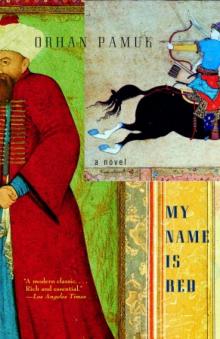 My Name is Red
My Name is Red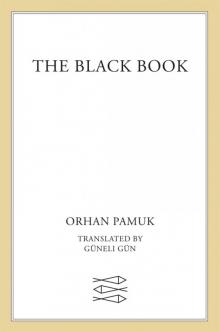 The Black Book
The Black Book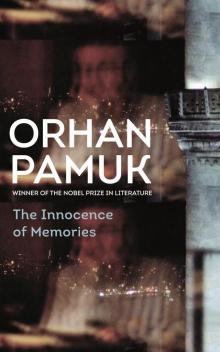 The Innocence of Memories
The Innocence of Memories The White Castle
The White Castle Other Colors
Other Colors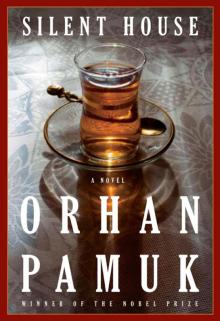 Silent House
Silent House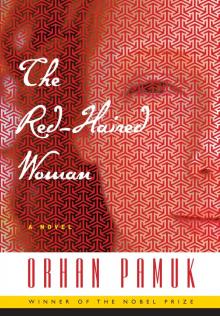 The Red-Haired Woman
The Red-Haired Woman The Museum of Innocence
The Museum of Innocence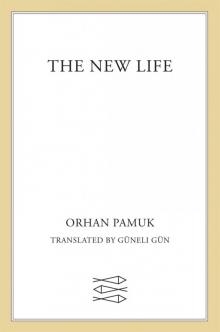 The New Life
The New Life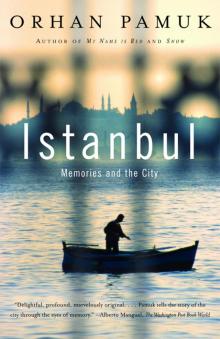 Istanbul
Istanbul